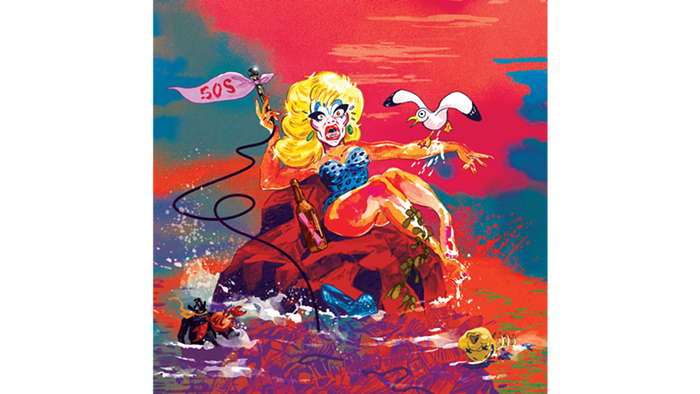When Dada spread through Germany after World War I, its practitioners championed the un-self-conscious artistic impulses of the child. Its name even referred to that most basic gesture of expression: a child addressing its father with those first clumsy syllables. But within that movement, privileging nonsensical, automatic expression was couched within hyper-self-conscious theory that belonged to the intellectual territory of adults.
Nearly a century later, Chris Johanson has helped trigger another massive art world trend that, in large part, draws its inspiration from the art of children. Johanson's paintings often employ a willfully naïve style: Scenes are reduced to the most essential elements and rendered in bright, solid colors. This simplistic visual language is perfectly suited to the uncomplicated worldview his work espouses—often in the comic strip speech bubbles that sprout from his figures' mouths. For example, in one small painting on display in the Portland Art Museum, a man waves his arms, either in surrender or as an attempt to grab someone's attention. Sprawling text spills out above him: "Mr. President, I want to know why none of you served in war. Why didn't you want to go, were you scared to die there?" It's a query every bit as guilelessly black and white as the accompanying drawing.
Unfortunately, this exhibition largely fails to show how Johanson's best work navigates the complex terrain of adulthood. Only "I Am Clear Now" shows what he's capable of. As two men recline in a primary-colored park setting, one describes quitting drugs before nakedly confessing to the other, "I hope that you know you are really important to me." The rest of the show, however, is dominated by a series of benign images of people driving in cars (including a collaboration with Johanson's wife, the artist Jo Jackson). Perhaps the highlight, though, is a conspicuously ramshackle, cave-like installation Johanson constructed with Kal Spelletich. The viewer enters the space where a circle of winking colored lights flash at random intervals while, behind, a psychedelic wheel spins according to a proximity sensor. In the midst of the sterile museum setting, Johanson's installation—some kind of low-budget carnival attraction—seems utterly misplaced: a physical illustration of how his child-like approach to art-making has infiltrated an adult institution.












